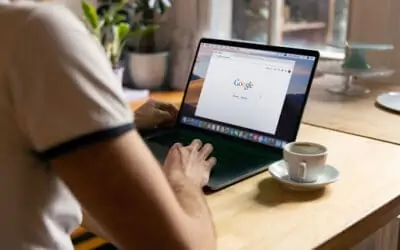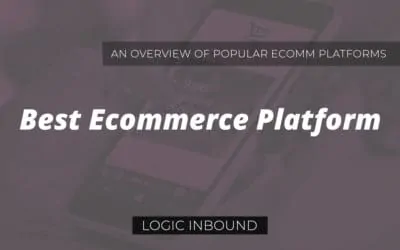When you run a small business, growth is your #1 priority. This doesn’t necessarily mean that the goal of every entrepreneur is to scale their enterprise into a megacorporation. Rather, a focus on growth is built into every aspect of running a small business.
Thing is, small businesses live and die based upon their ability to bring in new customers. You want to reach a broader base, and to have the ability to build a strong foundation of repeat business. Your brick and mortar has likely established itself with passionate local customers that return again and again. But how do you reach new customers when your local area starts to feel tapped out?
Plain and simple: digital business is the way of the future. Selling online allows you to connect with customers around the world. You can make sales 24/7, regardless of the hours your brick and mortar store is open. Best of all, you can manage your business from anywhere.
There’s a good chance that your business already has a website or some social media presence. After all, these are fantastic resources for getting across the basic information that potential customers need to frequent your business (i.e. hours, location, special events, etc.). The real question here: are you using your digital presence to its full potential?
Let’s talk about some tips and tricks for bringing your growing business online and maximizing your sales potential.
Invest in a Professional Look
When you’re selling online, you’re essentially convincing a customer to buy something that they’ve never seen in person. They are taking a leap of faith that the goods will be quality, will arrive in a timely manner, and that you will take proper security measures with their personal information. Given all that, it’s vital to establish trust from the moment potential customers arrive on your site.
The general look of your site has a huge impact on the way potential customers view your business. In terms of your physical store, it’s the equivalent of maintaining a clean, orderly space. Broken code, illogical navigation, long load times, and unnecessary pop-ups drive customers away; similar to dirty floors and broken signage in a brick and mortar.
While your whole site should look clean, there are a few key pages that absolutely need to be error free. These are the ones that you need to consistently check and prioritize in bug fixes and they include: your product pages, checkout pages, and anywhere customers enter personal information on your site.
You may choose to work with a developer to create a high-quality, stylish site, but remember: you’ll need to maintain anything you create initially over time. Bringing in a professional every time your site needs work can get expensive quickly, so it’s important to look into intuitive, streamlined options for building your site that you know you’ll be able to take care of yourself.
One more note: having a mobile-optimized site is vitally important to your growth online. 44% of online sales in the US came from mobile in 2018, and experts expect that Mcommerce will overtake traditional desktop-based eCommerce in 2019. In particular, optimize the key pages we mentioned earlier for mobile or you’ll lose potential customers.
Be Prepared to Invest in Marketing
One of the major differences between brick and mortar selling and eCommerce is the way that you’ll reach customers. A physical store can rely (to a degree) on foot traffic, potential customers driving by, and other location-based advantages. When you move your growing business online, you need a more proactive approach to connect with customers. Driving traffic involves a whole range of strategies, so let’s break down a few here.
PPC (or Pay Per Click) advertising is one of the most common methods of digital advertising- think Google, Facebook, and Bing ads. Because you only pay when a potential customer actually clicks on an ad, these can be a good investment, especially as you’re getting started.
Spend a lot of time on your copy for these. Remember, you have an extremely limited space to get the information across. Don’t waste your customer’s time. Figure out the key selling points you want to use and condense them down to a couple of sentences. The Hemingway Editor is a valuable tool for rooting out weak and awkward constructions in your writing. It is a useful way to find common issues in your writing so you can self-correct.
Social proof, or the ways that the decisions of other impact our own feelings and ideas about different topics, is a vital concept to understand as you move your growing business online. A restaurant that’s always busy, for example, feels different from one that is consistently empty. In a nutshell, we trust the opinions of people we know and individuals online over traditional marketing.
So what does social proof look like online? There is a range of apps out there for building your base of social proof, including Fomo, Disqus, and Yotpo. Fomo displays key customer behaviors on your site in real-time, like sales or signups. Disqus is a free tool you can use to add a comment section to your site. Finally, Yotpo helps you to showcase your reviews, including the ability to craft ads that feature your reviews.
These apps can all be helpful, but if you don’t want to start with one just yet, focus on building up a base of positive reviews on your site. Reach out to satisfied customers, and make it as easy as possible to leave a review. Feel free to put forward a couple of simple guiding questions- just be sure to keep it short, sweet, and simple.
Get Comfortable with SEO
SEO (or search engine optimization) is one of the most intimidating and often misunderstood methods of digital marketing. It’s a lot to cover so we won’t get into it too much here, but we’ll dig into a few pointers:
- Make sure all the media on your site (images, video, etc.) has alt text. Your alt text should include both basic information for e-readers to scan and understand the content, as well as some keyword rich text that search engines can crawl to get a sense of your site’s content.
- Chase long-tail keywords. You’ll likely struggle to compete with major players on high volume, general phrases. You’ll have more luck with keywords that describe your specific business. For example, rather than competing for “buy hardware online,” try something like “buy discount landscaping tools online.”
- Load time is one of the factors search engines use in determining where sites land in their rankings. You can test the speed of your site with Google, and there are a ton of resources online for improving site speed from there.
Use Social Media (Wisely)
Social media is a huge part of the cultural landscape, but it’s difficult to master from a business perspective. The biggest danger here as a business owner is over-stretching yourself. Trying to post on too many platforms can be exhausting, and may or may not pay off in the long run. Instead, find a few targeted areas where you think you can have a strong impact, and own those spaces.
Generally speaking, Instagram and Pinterest are strong choices for products with a strong visual focus, like clothing, jewelry, and art. Twitter can be a great way to tease releases and share news related to your business. Facebook is the reigning champion in terms of user numbers, and it’s also well-suited to Ecommerce. One specific note on Facebook: the Facebook Pixel is a powerful tool for creating and targeting advertisements to hyper-specific audiences.
Regardless of the platforms you choose, remember that social promotions can be a great source of advertising. Consider offering a giveaway or discounts for customers that like your page and share a post.
If it makes sense within your niche, consider looking into influencers in your niche to connect with. I recently wrote a piece about finding the right influencer to connect with your business- read more here.
Create a Great Customer Experience
One of the biggest challenges for small business owners selling online is customer service. In person, it’s easier to get to know your customers and control their experience. Online, it takes an extra degree of attention. Remember: repeat business is key for a business to survive and thrive, and the experience your customers have with you is vital to their decision to return or look elsewhere. With that in mind, here are a few tips to creating a great customer experience when you move your growing business online.
Have a return policy and advertise it clearly
Handling returns is much tougher online, but consumers expect the ability to return merchandise without a lot of hassle. It may cost more in the short run, but a bad return experience will lose you a customer and likely damage your reputation via a negative review.
Look into live chat
Chat is incredibly popular and comes with the added positive that it’s actually easier for your team to handle than phone lines. Not every business will find chat practical, but it can be incredibly useful. If you need an easy way to pass links and screenshots back and forth or your team needs to consistently maintain multiple conversations at once, look into live chat.
Offer discounts and deals to your repeat customers
This is about going above and beyond for loyal customers. Create an experience that makes your customers feel like you see them as individuals and that you genuinely care. Keep in mind that free shipping has a high perceived value for many consumers and can be a great discount to offer.
Possibly the biggest challenge that small businesses face is keeping up with the ever-changing nature of the market. There was a time when getting a landline for your business was cutting edge. Now it’s hard to imagine a business getting by without one.
The same is true of Ecommerce. The times are a’changing, and the shift is consistently toward the digital landscape. Want to learn more about the challenging and rewarding world of Ecommerce? Check out this post on structuring, managing, and growing your business online.
Selling online takes work, but it’s a rewarding journey that can revolutionize your business. In the long term, think about the areas where your brick and mortar really stands out. Is it your customer service? Your pricing? Your messaging? These aspects of your business will be invaluable as you move into the digital space. Bring your unique personality and approach online, and you’ll be amazed by what you can do.



0 Comments